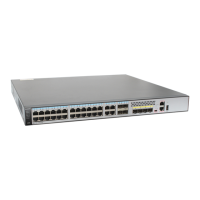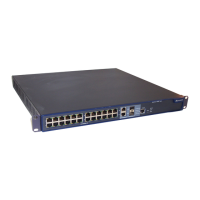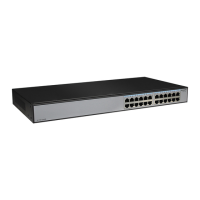Command Manual – Routing Protocol
Quidway S8500 Series Routing Switches Chapter 3 OSPF Configuration Commands
Huawei Technologies Proprietary
3-21
3.1.20 display ospf lsdb
Syntax
display ospf [ process-id ] [ area-id ] lsdb [ brief | [ asbr | ase | network | nssa | router
| summary [ verbose ] ] [ ip-address ] [ originate-router ip-address | self-originate ]
[ verbose ] ]
View
Any view
Parameter
process-id: Process ID of OSPF. The command is applied to all current OSPF
processes if you do not specify a process ID.
area-id: ID of the OSPF area, which can be a decimal integer in the range 0 to
4,294,967,295 or in IP address format.
brief: Views brief database information.
asbr: Views the database information of Type-4 LSA (summary-Asbr-LSA).
ase: Views the database information of Type-5 LSA (AS-external-LSA).
network: Views the database information of Type-2 LSA (Network-LSA).
nssa: Views the database information of Type-7 LSA (NSSA-external-LSA).
router: Views the database information of Type-1 LSA (Router-LSA).
summary: Views the database information of Type-3 LSA (Summary-Net-LSA).
ip-address: Link state ID in IP address format.
originate-router ip-address: Views the IP address of the LSA generator.
self-originate: Views the database information of self-originated LSA.
Description
Use the display ospf lsdb command to view the link-state database (LSDB) of OSPF.
Example
# Display the LSDB of OSPF.
<Quidway> display ospf lsdb verbose
OSPF Process 1 with Router ID 1.1.1.1
Link State Database
Area: 0.0.0.0
Type LinkState ID AdvRouter Age Len Sequence Metric Where
Rtr 2.2.2.2 2.2.2.2 465 36 8000000c 0 SpfTree
Rtr 1.1.1.1 1.1.1.1 449 36 80000004 0 SpfTree
Net 10.153.17.89 2.2.2.2 465 32 80000004 0 SpfTree

